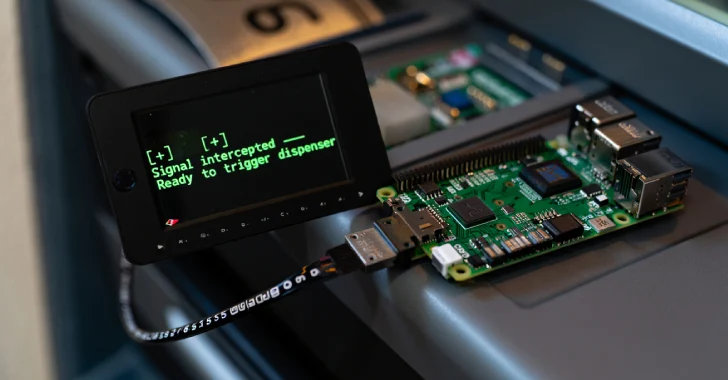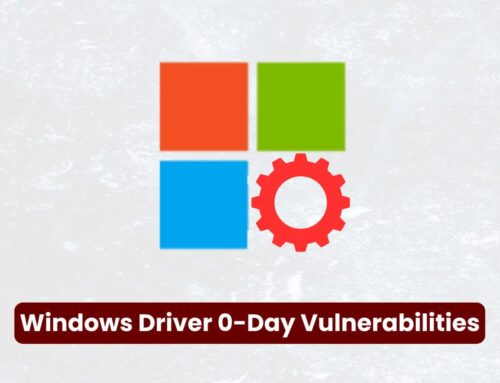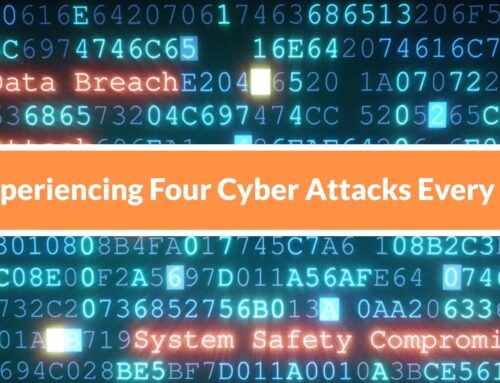
UNC2891 Breaches ATM Network via 4G Raspberry Pi, Tries CAKETAP Rootkit for Fraud
In the high-stakes world of financial institutions, the integrity of ATM networks is paramount. A recent, unsettling incident involving the financially motivated threat actor UNC2891 has brought to light a sophisticated and deeply concerning method of ATM network compromise. This attack, leveraging a common, unassuming device like a Raspberry Pi, underscores the evolving nature of cyber-physical threats and the critical importance of a multi-layered security posture.
UNC2891’s Ingenious Approach: The 4G Raspberry Pi Breach
UNC2891, a known financially motivated threat actor, has demonstrated a significant leap in their operational capabilities by directly targeting Automatic Teller Machine (ATM) infrastructure. Their method of choice? A seemingly innocuous Raspberry Pi, enhanced with 4G connectivity. This critical detail highlights a shift towards blended physical and digital attack vectors, making traditional perimeter defenses less effective.
The core of this cyber-physical attack involved the adversary gaining physical access to the target environment. Once inside, they skillfully installed the Raspberry Pi device, connecting it directly to the same network switch as the ATM. This strategic placement granted UNC2891 an immediate and powerful foothold, effectively bypassing typical network segmentation controls and establishing a direct line of communication with the ATM and potentially other devices on the same segment.
The integration of 4G capabilities into the Raspberry Pi is a game-changer. It provides the attackers with an out-of-band communication channel, enabling them to control the device remotely, exfiltrate data, or deploy further payloads without relying on the target’s compromised network for command and control (C2). This significantly complicates detection and response efforts, as traditional network monitoring tools might not immediately flag suspicious external traffic originating from an internally placed device.
CAKETAP Rootkit: The Stealthy Fraud Enabler
Once established within the network, UNC2891 attempted to deploy what has been identified as the “CAKETAP” rootkit. The very name suggests its purpose: to facilitate financial fraud in a covert manner. Rootkits are notorious for their ability to hide their presence and activities from security software and system administrators. By operating at a deeply embedded level within the compromised system, CAKETAP would likely aim to:
- Maintain Persistence: Ensure continued access to the ATM or connected systems even after reboots or security cleanups.
- Evade Detection: Manipulate system processes, files, or network traffic to remain hidden from antivirus software, endpoint detection and response (EDR) solutions, and intrusion detection systems (IDS).
- Facilitate Fraudulent Transactions: Potentially intercept card data, manipulate transaction requests, or enable unauthorized cash withdrawals.
The specific functionalities of CAKETAP would depend on its design, but given UNC2891’s financial motivation, it’s highly probable that its primary goal is to enable direct monetary gain, either through unauthorized access to funds or by compromising sensitive financial data.
The Blurring Lines: Cyber-Physical Threats
This incident vividly illustrates the growing trend of cyber-physical attacks. These attacks bridge the gap between the digital and physical realms, often leveraging physical access to deploy digital tools that then exploit cybersecurity vulnerabilities. The implications for critical infrastructure, including financial systems, are profound:
- Physical security measures become as crucial as cybersecurity controls.
- Supply chain integrity becomes a significant attack surface.
- Traditional network segmentation alone is insufficient if physical access leads to direct network connectivity.
- Incident response plans must account for hybrid attack scenarios involving both physical device recovery and digital forensics.
Remediation Actions and Prevention Strategies
Addressing threats like those posed by UNC2891 requires a holistic and multi-faceted security approach. Financial institutions and other organizations managing critical infrastructure should consider the following remediation and prevention strategies:
- Enhanced Physical Security: Implement stringent access controls, surveillance, and regular inspections of sensitive network areas and devices. Consider tamper-evident seals on network equipment and enclosures.
- Network Segmentation and Micro-segmentation: Go beyond basic VLANs. Implement robust network segmentation that isolates critical systems like ATMs onto separate, heavily restricted network segments, limiting east-west traffic. Consider micro-segmentation for individual devices where feasible.
- Network Access Control (NAC): Deploy NAC solutions that can identify and authenticate every device attempting to connect to the network. Devices like unauthorized Raspberry Pis should be immediately quarantined or blocked. Implement 802.1X authentication where possible.
- Regular Network Audits and Asset Discovery: Conduct frequent, comprehensive network audits and maintain an up-to-date inventory of all connected devices. Use automated tools to detect unauthorized devices or unusual network activity.
- Endpoint Detection and Response (EDR) on ATMs/Connected Devices: Deploy EDR solutions on ATMs and any directly connected controllers or servers. These tools can identify and alert on suspicious processes, file modifications (like rootkit installations), and unauthorized network connections.
- Threat Intelligence and Awareness: Stay updated on emerging threats and attacker tactics, techniques, and procedures (TTPs), particularly those targeting your industry. Subscribe to threat intelligence feeds.
- Incident Response Planning: Develop and regularly test incident response plans specifically tailored for cyber-physical attacks, including procedures for physical device recovery, forensic analysis of compromised devices, and coordination between physical security and cybersecurity teams.
- Vendor Security Assessments: Ensure that all third-party vendors and contractors with physical access to your premises undergo rigorous security vetting and adhere to strict security protocols.
- Patch Management: Maintain a rigorous patch management program for all operating systems and software running on ATMs and related infrastructure to mitigate known vulnerabilities. While this attack leveraged physical access, unpatched vulnerabilities can facilitate lateral movement post-compromise.
- Supply Chain Security: Vet the security practices of your hardware and software suppliers to minimize the risk of pre-compromised devices entering your environment.
Tools for Detection and Mitigation
| Tool Name | Purpose | Link |
|---|---|---|
| Network Access Control (NAC) Solutions | Controls network access; detects and isolates unauthorized devices. | Gartner’s NAC market guide is a good starting point |
| Endpoint Detection and Response (EDR) Platforms | Monitors endpoints for malicious activity, detects rootkits, and enables rapid response. | MITRE ATT&CK: EDR Technologies |
| Network Intrusion Detection/Prevention Systems (NIDS/NIPS) | Monitors network traffic for suspicious patterns and known attack signatures. | Snort (Open Source NIDS) |
| Vulnerability Scanners | Identifies unpatched software and misconfigurations on network devices and endpoints. | Tenable Nessus |
| Physical Security Information Management (PSIM) | Integrates and correlates data from various physical security systems. | SIA’s PSIM overview |
Key Takeaways
The UNC2891 incident serves as a stark reminder that cyber threats are no longer solely confined to the digital realm. The successful deployment of a 4G-equipped Raspberry Pi to breach an ATM network, coupled with the attempted use of a rootkit like CAKETAP for fraud, highlights several critical points:
- Physical access is a significant vulnerability: Organizations must strengthen physical security around sensitive network infrastructure.
- Out-of-band communication channels pose a grave risk: The use of 4G bypasses traditional network monitoring and requires alternative detection methods.
- Cyber-physical attacks are sophisticated and increasing: A layered security approach encompassing both physical and digital controls is imperative.
- Proactive defense is essential: Regular audits, robust NAC, and advanced endpoint protection are vital for early detection and rapid response to such complex threats.
Adapting to these evolving threats demands constant vigilance, investment in advanced security technologies, and a commitment to integrating physical and cybersecurity practices. The security of our financial infrastructure depends on it.





